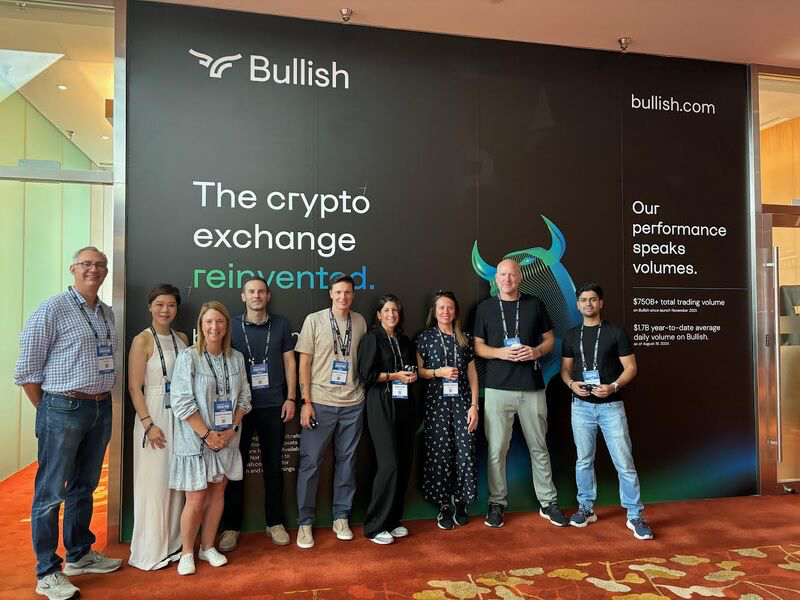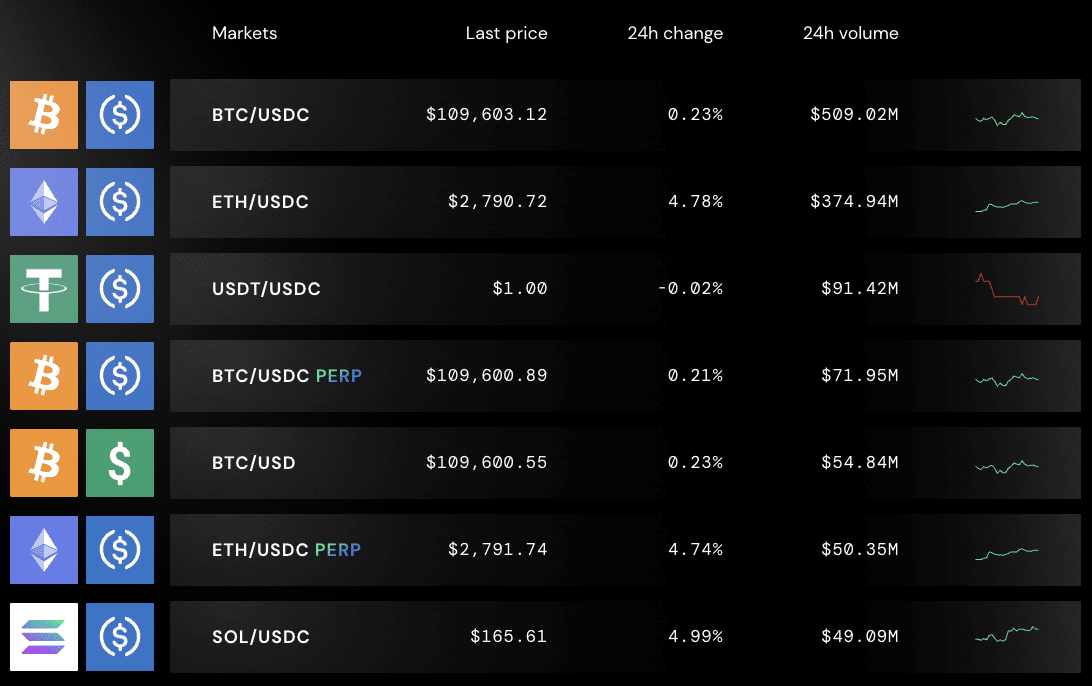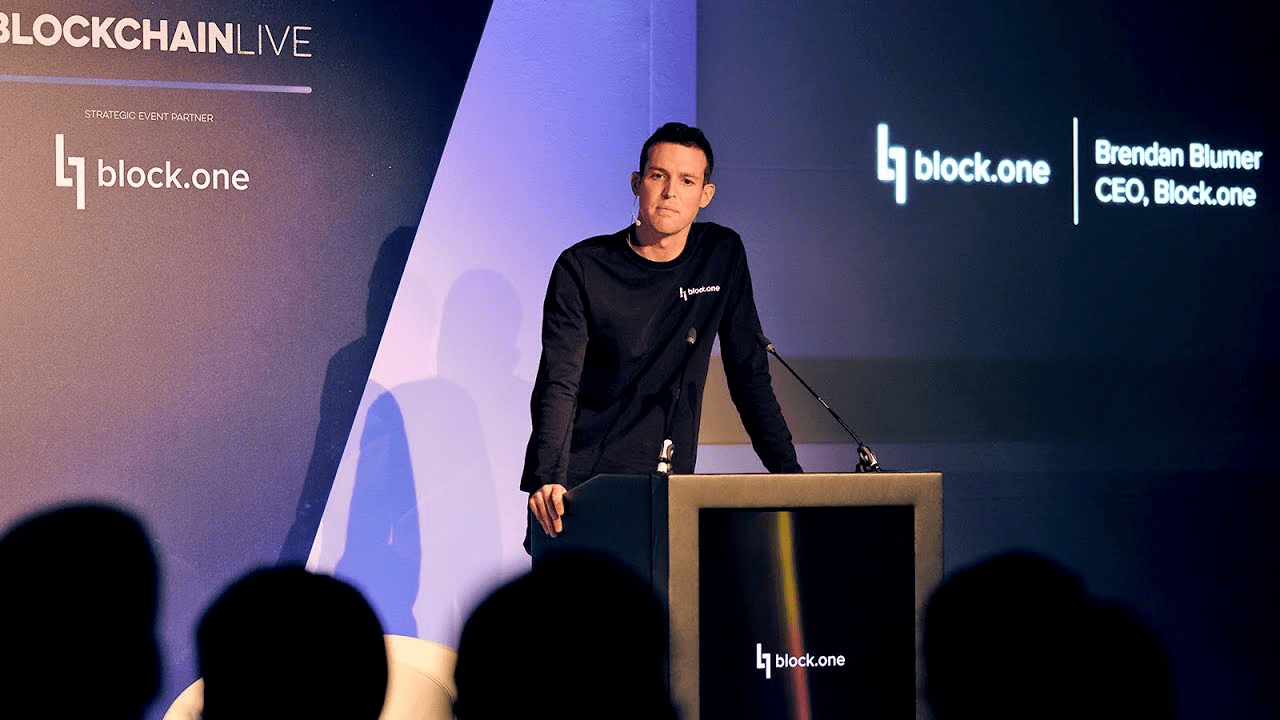On July 19, 2025, CNBC reported that Bullish had officially submitted IPO documents to the SEC, planning to list on the New York Stock Exchange, with the stock code 'BLSH'. This marks another crypto company attempting to enter the U.S. stock market after Circle and Coinbase.
According to the prospectus, as of the first quarter of 2025, the cumulative trading volume on the Bullish platform had reached $12.5 trillion, with a daily average trading volume of over $2.5 billion in the first quarter. Among them, Bitcoin trading volume reached $108.6 billion, a year-on-year increase of 36%.
In the most profitable CEX track in the crypto space, Bullish is not a well-known name, but in fact, its 'background' is quite illustrious.
In 2018, EOS burst onto the scene, claiming to be Ethereum's killer, and the company behind it, Block.one, conducted the longest and largest ICO (Initial Coin Offering) in history, raising an astonishing $4.2 billion.
Years later, when EOS's popularity faded, Block.one 'started afresh' and turned to create a cryptocurrency trading platform focused on compliance, targeting the traditional financial market—Bullish, and thus was 'kicked out' by the EOS community.
In July 2021, Bullish officially launched. The initial funding included: $100 million in cash from Block.one, 164,000 Bitcoins (then valued at about $9.7 billion), and 20 million EOS; external investors also added $300 million, including PayPal co-founder Peter Thiel, hedge fund mogul Alan Howard, and well-known investors in the crypto industry like Mike Novogratz.
Close to 'Circle' and far from 'Tether', Bullish 'aims for compliance'
Bullish's positioning has been very clear from the start: scale is not important, but compliance is crucial.
Because Bullish's ultimate goal is not to earn profits in the crypto world, but to become a legitimate trading platform that can go public.
Before officially operating, Bullish reached an agreement with a publicly listed company, Far Peak, to invest $840 million to acquire 9% of the company’s shares and to conduct a $2.5 billion merger, achieving a backdoor listing and lowering the traditional IPO threshold.
At that time, media reports valued Bullish at $9 billion.
The former CEO of the merged company Far Peak, Thomas, is the current CEO of Bullish. He has a very strong compliance background: he was previously the Chief Operating Officer and President of the New York Stock Exchange, where he performed excellently; he has established deep connections with Wall Street giants, CEOs, and institutional investors; and he possesses extensive resources in regulation and capital.
It is worth mentioning that Farley has not been involved in many external investments and acquisitions by Bullish, but the few it has made are quite noteworthy in the crypto space: Bitcoin staking protocol Babylon, re-staking protocol ether.fi, blockchain media CoinDesk.
In short, Bullish is the trading platform in the crypto space that most wants to become a 'regular army on Wall Street'.
But ideals are plentiful, while reality is stark. Compliance is much harder than they imagined.
With the increasingly tough regulatory stance in the U.S., Bullish's original merger listing agreement was terminated in 2022, and the 18-month listing plan was aborted. Bullish also considered acquiring FTX for rapid expansion, but ultimately it did not materialize. Bullish was forced to seek new compliance paths—such as moving to Asia and Europe.

Bullish at the Hong Kong Consensus Conference
At the beginning of this year, Bullish also obtained a Type 1 license (for conducting securities trading) and a Type 7 license (for providing automated trading services) from the Hong Kong Securities and Futures Commission, as well as a virtual asset trading platform license; additionally, Bullish received the necessary permits for cryptocurrency trading and custody from the Federal Financial Supervisory Authority (BaFin) in Germany.
Bullish has approximately 260 employees worldwide, with more than half stationed in Hong Kong, and the rest distributed in Singapore, the United States, and Gibraltar.
Bullish's clear aim for compliance is also reflected in another obvious aspect: close to 'Circle', far from 'Tether'.
On the Bullish platform, the most traded stablecoin pairs are USDC, not the larger circulating and older USDT. Behind this reflects its clear stance on regulatory attitudes.

In recent years, as USDT has faced increasing regulatory pressure from the SEC, its market dominance has begun to wane. On the other hand, USDC, a stablecoin jointly launched by compliant companies Circle and Coinbase, not only successfully listed on the U.S. stock market but also became a favorite in the capital markets as the 'first stablecoin stock', with excellent stock performance. With good transparency and regulatory adaptability, USDC's trading volume has continued to soar.
According to the latest report released by Kaiko, trading volume for USDC on centralized exchanges (CEX) has significantly increased in 2024, reaching $38 billion in March alone, far exceeding the monthly average of $8 billion in 2023. Among them, Bullish and Bybit are the two platforms with the largest trading volume for USDC, together accounting for about 60% of the market share.
The 'love and hate relationship' between Bullish and EOS
If one phrase could describe the relationship between Bullish and EOS, it would be 'the ex and the current'.
Although the price of coin A (originally EOS) surged 17% after news broke that Bullish had secretly submitted an IPO application, in fact, the relationship between the EOS community and Bullish is not good because Block.one, after abandoning EOS, immediately embraced Bullish.
Going back to 2017, the public chain track was in its golden age. Block.one released a white paper introducing EOS, a super public chain project that touted 'one million TPS, zero fees', attracting a global influx of investors. Within a year, EOS raised $4.2 billion through its ICO, breaking industry records and igniting a fantasy of being the 'Ethereum killer'.
However, the dream started quickly, and the collapse came just as fast. After the EOS mainnet went live, users quickly discovered that this chain was not as 'invincible' as advertised. Although transfers did not incur fees, they required staking CPU and RAM, which made the process complex and the operation threshold high; node elections were not the 'democratic governance' imagined, but were soon controlled by large holders and exchanges, leading to issues like bribery and vote trading.
However, what truly accelerated EOS's decline was not just technical issues, but more the resource allocation problems within Block.one.
Block.one originally promised to allocate $1 billion to support the EOS ecosystem, but what it actually did was the complete opposite: it made large purchases of U.S. Treasury bonds, hoarded 160,000 Bitcoins, invested in the failed social product Voice, and used the money for stock trading and domain name purchases... the actual support for EOS developers was pitifully small.
At the same time, the internal power structure of the company is highly centralized, with core executives almost entirely composed of Block.one founder BB and his relatives and friends, forming a small circle-like 'family business'. After 2020, BM announced his departure from the project, which also became a prelude to the complete split between Block.one and EOS.
What truly ignited the anger of the EOS community was Bullish's arrival.

Block.one founder BB
In 2021, Block.one announced the launch of the cryptocurrency trading platform Bullish, claiming to have completed $10 billion in financing, with an impressive list of investors—such as PayPal co-founder Peter Thiel and Wall Street veteran Mike Novogratz—supporting it. This new platform focuses on compliance and stability, creating a 'bridge' for institutional investors in the crypto finance space.
However, this Bullish has almost no connection to EOS in terms of technology or brand—no use of EOS technology, no acceptance of EOS tokens, no acknowledgment of any association with EOS, not even the most basic expression of thanks.
For the EOS community, this is tantamount to a public betrayal: Block.one used the resources accumulated through the establishment of EOS to start a 'new love'. Meanwhile, EOS has been completely left behind.
Thus began the counterattack from the EOS community.
At the end of 2021, the community initiated a 'fork uprising' in an attempt to cut off Block.one's control. The EOS Foundation, as the representative of the community, began negotiations with Block.one. However, after a month of discussions on various proposals, no consensus was reached. Finally, the EOS Foundation, in conjunction with 17 nodes, revoked Block.one's power status and expelled it from the EOS management. In 2022, the EOS Network Foundation (ENF) initiated a lawsuit, accusing it of breaching ecological commitments; in 2023, the community even considered a hard fork to completely isolate Block.one and Bullish's assets.
Related Reading: (The Story of the EOS Nodes Stopping the Release of Block.one Accounts: The Parent Company Expelled by the Community).
After EOS and Block.one separated, the EOS community engaged in a years-long lawsuit over the ownership of the funds raised initially, but so far Block.one still retains ownership and usage rights to the funds.
Therefore, in the eyes of many in the EOS community, Bullish is not a 'new project', but more like a symbol of betrayal, and this Bullish that secretly submitted an IPO application always represents the 'new love' that traded their ideals for reality—glamorous yet shameful.
In 2025, in order to break away from its past, EOS officially changed its name to Vaulta, building a Web3 banking business on the foundation of the public chain, while also renaming the token EOS to A.
How much money does Block.one, which is swimming in wealth, actually have?
What we all know is that early on, Block.one raised $4.2 billion, becoming the largest financing event in crypto history. In theory, this funding could sustain the long-term development of EOS, support developers, drive technological innovation, and allow the ecosystem to grow sustainably. When EOS ecosystem developers pleaded for funding, Block.one only tossed out a $50,000 check—this amount isn't even enough to pay a Silicon Valley programmer for two months' salary.
'Where did the $4.2 billion go?' the community questioned.
In an email from BM to Block.one shareholders dated March 19, 2019, some answers were disclosed: as of February 2019, Block.one held assets (including cash and invested funds) totaling $3 billion. Of this $3 billion, approximately $2.2 billion was invested in U.S. government bonds.
Where did the $4.2 billion go? Generally, it can be divided into three main directions: $2.2 billion went to buy government bonds: low risk, stable return, ensuring wealth preservation; 160,000 Bitcoins; a small amount for stock trading and acquisition attempts: such as the failed Silvergate investment, purchasing the Voice domain name, etc.
Many people do not know that EOS's parent company, Block.one, is currently the private company that holds the most Bitcoins, owning a total of 160,000 BTC, which is 40,000 more than the stablecoin giant Tether.

Data source: bitcointreasuries
Calculating at the current price of $117,200, these 160,000 BTC are worth about $18.752 billion. This means that just from the appreciation of this Bitcoin, Block.one has made over $14.5 billion on paper, which is about 4.47 times the amount raised during the ICO.
From the perspective of 'cash flow is king', Block.one is very successful today, even more 'forward-looking' than MicroStrategy, and is one of the most profitable 'project parties' in crypto history. However, it is not about 'building a great blockchain', but rather 'how to maximize the preservation of principal, expand assets, and exit smoothly'.
This is precisely another side of irony and reality in the crypto world: in the crypto space, the ones who win in the end are not necessarily those with the 'best technology' or the 'most passionate ideals', but perhaps those who understand compliance best, adapt to changing circumstances, and are most adept at retaining funds.


